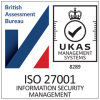For any firm in the Wealth and Investment Management industry that make their services available via intermediary partners, there is an ongoing effort to drive business with a broader range of firms, and extend relationships further into existing networks.
To achieve both of these strategic aims, Wealth Management firms need to understand :
• Who are the networks/ branches and firms we work with and what relationships do we have with them?
• What advisors do we know and what level of engagement do we have with them?
• Which of them have written any business with our firm, have this been consistent over time?
• How effective are our marketing and business development activities with these entities?
Seemingly, these should be easy questions to answer. Yet many firms find themselves only able to answer them via extracts from various systems and manually compiled reports which are valid at a point in time, most likely with a degree of inaccuracy. The resulting data is often not made available to those who find it most useful, namely front office business development staff who make decisions every day on where to spend their increasingly valuable time.
When planning to put in place a system that enhances the capability to manage and report on intermediary led business, the first step is to implement a consistent way of representing the intermediary hierarchy. That in itself is not a minor task, you need a suitable platform with a data model that supports the web of internal and external relationships that your introducers and intermediaries have in the real world. With that achieved, a level of information will be required, typically descriptive fields about the nature of the business or advisor, most of which can be imported from external sources such as the FCA Register or companies specialising in providing these data sets. Additional integration may be also be considered to provide an enhanced view of financial information for a firm, showing the business written for certain funds or platforms, over time – layered onto the core data set.
This data, a commodity asset, must be an ongoing investment otherwise it becomes less accurate and valuable over time. The ability to load external data, matching against your existing databases and updating a single golden source must be considered as a core process in your data governance policy around intermediaries. Once the management of how that data is maintained is in place, there is a strong starting point for augmenting that data with the information that makes it valuable and a differentiator for your firm to gain a competitive advantage. Broadly, there are two categories of data that are specific to a firm working with Intermediaries – they are relational and behavioural.

On the relationship side, we want to understand whether or not an intermediary has done business with us or not, and how often, as well as who looks after them from an internal perspective. A key challenge with managing such a large network of contacts is one of allocation – how do we decide who owns the internal relationship when a firm or advisor is added to the system? Quite often, a simple geographical allocation model will be adopted, as post code is one of the attributes available at the point of creating a new firm or advisor.
Whilst on the face of it this model is simple to put in place, it has it’s own challenges. Advisors can often be physically based in one region, whilst working for a firm based in another, or an existing relationship with a BDM in one region means that despite physical location – that relationship must be respected when it comes to any new business opportunities with the advisor or firm. Add to this complexity, internal hires, movers and leavers and it quickly becomes an overhead to centralise, communicate and enforce who is the owner of a relationship or deal.
A configurable, rule based allocation engine should be a requirement of the business support function – allowing for overrides at a firm or advisor level to provide the flexibility of the real world. Once this can be applied to your central intermediary repository – you have up to date, accurate and allocated data – and more importantly, the views of associated information in your system such as activities, related business opportunities or portfolios can be tailored for users of the system based on this underlying allocation.
Introducing the capability to help grow the business conducted via your intermediary network involves understanding how to effectively engage with those advisors that will be recommending your services or products to their clients. Generating an awareness and interest in what you offer is very much the role of marketing, and alongside this should be a consideration of how you track the behaviour of your advisors – with consideration to the relative importance of the interactions they have with your firm. Often called ‘lead scoring’ – the concept could be central to how you derive real value from your investment in data and the systems that embed consistent processes across your front office.
Imagine the situation where Advisor A attends an event about a certain product. He might follow up by responding to a survey, and then two weeks later, request a brochure for more information. These distinct interactions should be tracked in single place, made possible by a centralised CRM system. From a user’s point of view, being able to see these interactions is of limited use. For a BDM targeted with identifying and following up on potential leads it is the ability to have the system present some insight over those interactions that is required.
For example, assuming the event, email, and brochure are related to a certain service or product, it should be possible to score the level of engagement and interest that a particular advisor and their firm has in that service, based on their behaviour. If Advisor A came to an event, viewed the email and downloaded a brochure then it may be sensible to assume he is interested in that service. This ‘product level’ interest rating can be traced across the entire set of advisors and firms in the system, automatically. The question can then be asked of a system “show me all of the advisors in my region where they have a high level of interest in product A over the past x months’ or potential leads triggered as follow up activities automatically on a user’s dashboard.
The approach to deriving insight from actions that are recorded in a system can be applied across the entire journey of an advisor engaging with your firm, from initial outbound marketing efforts through to the point of portfolio deactivation and cessation of the business relationship. At any given point in time, it offers the ability to understand the level of engagement across networks, or within particular firms – and more importantly, at a product or service level. Overtime, this forensic database of interactions, behaviours and results could be mined with a view to understanding the journey that a typical advisor might go on to becoming a loyal supporter of your business.
As the old saying goes “Rome wasn’t built in a day”, and the same applies when considering managing the Intermediary channel – the foundations of having a reliable system in place, with processes around how to capture and manage data are crucial to going onto unlocking the value it holds, and the business opportunities it presents.





